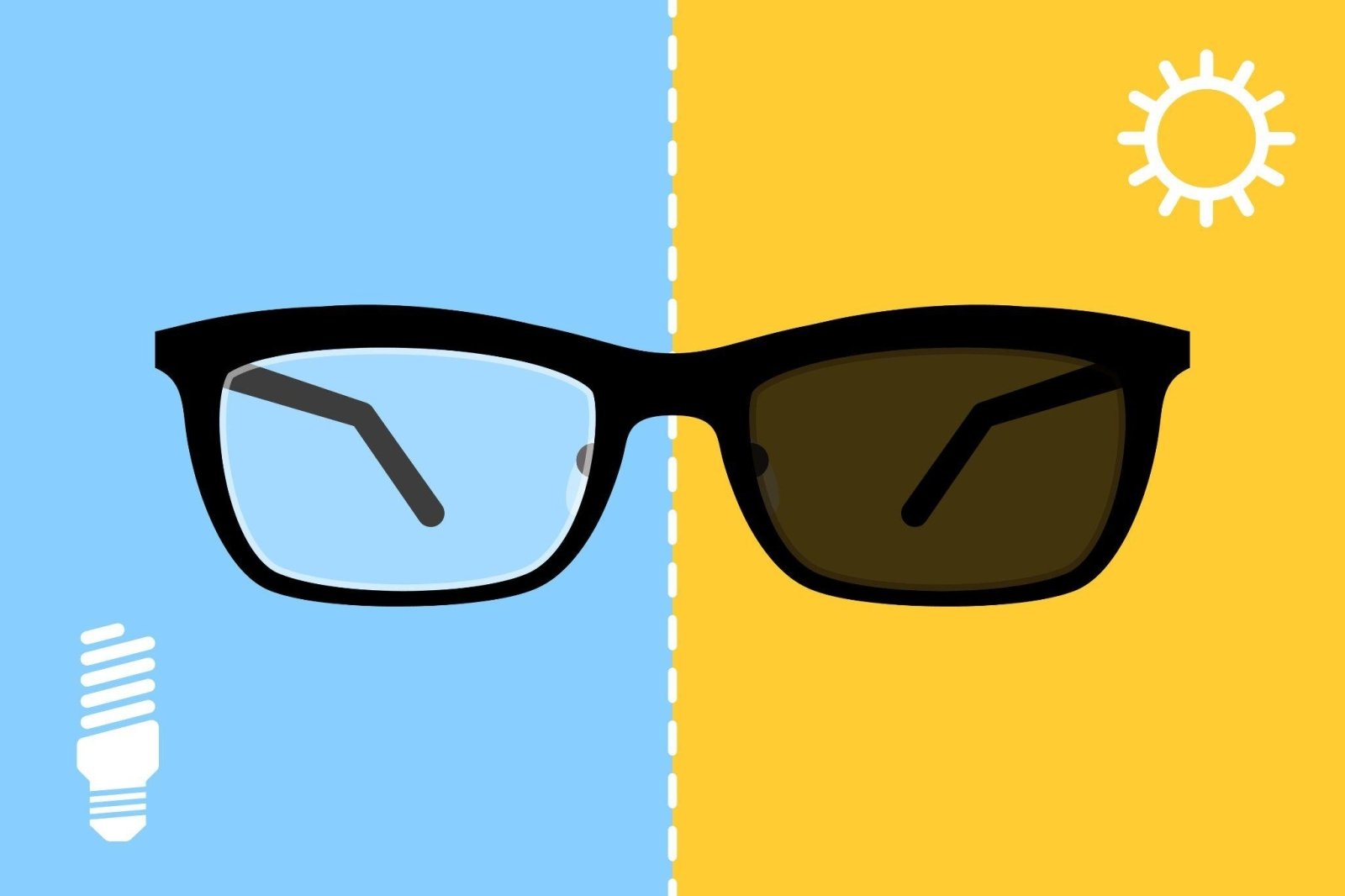Picking out a pair of sunglasses isn’t what it used to be. It’s no longer a question of do I want the round ones or the square ones? But of colours, sizes, styles and lens features, making it sometimes an overwhelming decision.
The first question to ask yourself before diving into the details is if you want traditional sunglasses or something more cutting edge, like Transitions lenses. While they each have their perks and drawbacks, comparing the two is important when making a decision on how you want to go about protecting your eyes.
Below, we weigh the benefits and downsides to Transition lenses and sunglasses, to help you answer the question, ‘can transition lenses replace sunglasses?’ Let’s get to it.

What are Transitions lenses and how do they work?
Transition lenses, also called photochromic lenses, are specially designed to darken when exposed to UV rays. The lenses are implanted with trillions of chloride and silver halide molecules.
When exposed to sunlight, the molecules are stimulated and begin to change form. This collective reaction causes the molecules to darken, resulting in tinted lenses that resemble sunglasses.
Just as the lenses darken when exposed to sunlight, they return to normal, clear lenses when you step out of the sun. However, the time it takes for lenses to return to normal (as little as four minutes) is longer than the time it takes for them to darken (approximately 30 seconds).

Pros and cons of Transitions lenses
For people with strong prescriptions that require them to wear glasses in order to see, Transition lenses offer a convenient solution for sun protection. Maybe you’re wondering whether transition lenses have UV protection. Well, good news, they do! Rather than having to switch your regular glasses out for prescription sunglasses, or worse yet, stacking shades on top of your regular glasses to protect your vision, Transitions lenses do all of the work for you.
Transition lenses also come in many styles, colours and designs that allow you to show off your personal flair! They also have more conservative options that offer a more professional appearance.
With every perk, there is usually a little drawback. While Transition lenses are advantageous in many ways, there are some areas where improvement is needed before they’re deemed a “perfect solution”.
First, the molecules in the lenses are triggered not only by UV rays in sunlight but also by temperature. Cold temperatures will accelerate the reaction of the molecules, while warmer environments slow it down. This can be a bit of a bummer during the warmer months when you need quicker darkening time, or during the chillier parts of the year when your lenses darken and you’re not necessarily wanting them to.
Another drawback is that the fade back time on the lenses is longer than many people may prefer. It can take anywhere from four to ten minutes for lenses to clear up after being outdoors, which leaves lenses in a hazy in-between faze. While some people are not bothered by this, others may feel self-conscious or annoyed by the slow reversion.
Much of the sun exposure to our eyes happens while we’re driving, which leads many to ask if Transition lenses are effective while you’re in your car. Because Transition lenses are triggered mostly by UV rays and windshields are tinted to block UV rays, the lenses don’t always darken completely while driving. This can leave your eyes susceptible to damage and your vision at risk of glare, which can distract you from the road.
Pros and cons of sunglasses
Sunglasses are the original outdoor eyewear that offers sun protection for your eyes. One of the perks of sunglasses is that you can control the darkness of the lenses.
For instance, when you’re driving in Transitions lenses, you’re at the mercy of the lens and how dark it gets in that particular environment. With sunglasses, you just pop them on when the sun is out and have your desired darkness instantly, regardless of temperature or UV exposure.
Another perk of sunglasses is that there is no fade back time — you just put them on and take them off. Sunglasses, whether they’re prescription or not, are also less expensive than Transitions lenses, which allows you to purchase a casual pair and a dressier pair of frames to fit your lifestyle.
For those who require vision correction, prescription sunglasses are available to provide you with clear vision while outdoors. While they’re typically less expensive than Transitions lenses, prescription sunglasses can still cost more than non-prescription sunglasses, which may deter some consumers.
Some of the downsides of sunglasses are the lack of convenience for those who wear glasses. Having to stop and switch out your eyewear before you go outside can be a real pain. Not to mention, you have to store your sunglasses or reading glasses somewhere when you aren’t using them.
The biggest concern with sunglasses is that not all of them are created equal. Cheap sunglasses that don’t offer 100% UV protection can actually cause more damage to your eyes than wearing no sunglasses at all.
It’s important when shopping for sunglasses, whether online or in-store, to buy from reputable retailers and to look for “100% UV protection” of “UV 400” to ensure that you’re getting proper protection for your peepers.

Transitions lenses vs. sunglasses
Whether Transitions lenses or sunglasses are the better option completely depends on what you’re looking for from your eyewear.
If you are looking for a no-fuss, one-pair-fits-all solution, Transitions lenses are then right for you. If you want more control over the level of UV protection you receive, or Transition lenses are a little out of your budget, you can’t go wrong with a pair of sunglasses.
Regardless of whether you prefer Transition lenses or sunglasses, the important thing is protecting your eyes from sun damage. So, before you soak up the sun, pick out a trustworthy pair of sunglasses from Mahdi Opticals to keep you safe and looking cool!


